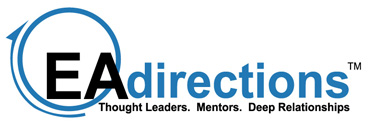What is enterprise architecture’s role in innovation? The question comes up often, and it is worth sharing a few thoughts and recommendations.
Many company leaders choose to create an “innovation practice” to help them stay competitive in their industry. Enterprise architects are eager to participate, often have much to contribute, and naturally don’t want to be left out. They call us and look for advice on how to persuade leaders to place the innovation practice inside EA. They are surprised and sometimes frustrated to learn that our usual recommendation is to avoid “owning” the process. While EA plays a significant role in innovation, it may be better for another area to own and manage the process.
As a quick reminder, there are two primary outcomes that an innovation process mitigates:
- Ensure companies do not miss or react too slowly to what could be meaningful innovation opportunities.
- Ensure companies do not waste time, resources, and funding chasing weak, unvetted, or duplicative innovation ideas.
Regardless of structure and ownership, leaders should work to embed innovation in the company’s culture. EA can contribute ideas, identify possible scenarios, and provide analyses, all as part of their natural command of the enterprise context. EA’s who choose to engage and encourage others to contribute will go a long way to reinforce that innovation is part of the culture. Here are several “lessons learned and mistakes to avoid.”
Ideas can come from anywhere. Encourage contribution.
Ideas can come from anywhere: leadership, the business side, the IT side, external advisors, management, staff, customers, and suppliers, to name a few. Consider ideation feeding into a wide-mouthed funnel. The approach should not discriminate good ideas from the bad. Everything goes in, is collected and organized by those managing the process, and then flows into a review.
EA’s and the larger EA Community are a primary source for innovative ideas. Identifying ideas should be a regular part of internal meetings and analyses.
It is common for ideas to come from members of the EA community as a result of their day to day work to maintain the library of EA Content. Given EA’s focus on enterprise perspectives, all architects should actively monitor and collect macro-level business and technology marketplace trends that might have an impact on the company. Ideation is not merely a passive idea-collection exercise. EA leaders should encourage the broader EA community to identify applicable trends from each community member’s specific business and IT subject matter expertise. We recommend a regular quarterly cadence.
Evaluate innovation ideas in the context of the enterprise
EA’s primary innovation role is to analyze ideas to determine if and how they fit in the potential enterprise landscape. EA has a unique perspective drawn from its knowledge of multiple enterprise and domain views.
EA should focus on assessing ideas that are material to the enterprise, lead to new or changed capabilities, or affect foundational architectures. The core EA Principles, business capability analyses, information models, strategic drivers, existing standards, and reference architectures provide the context for that analysis.
Time is a critical part of idea analyses
An innovation process should analyze not just today’s need but should also examine an idea across its full potential lifespan. Some ideas might merit immediate action. More often, though, the organization may not be ready to pursue an idea immediately due to cost, resources, or other reasons. Keep track and establish triggers to revisit it if and when conditions change, or a specific amount of time has elapsed. A forward-looking innovation roadmap is a valuable deliverable in its own right but is even better if synchronized with an overall EA roadmap.
EA and Innovation Together
While EA should not necessarily own an innovation process, the overlap is significant. EA plays a critical role in the innovation process. Conversely, innovation is a crucial part of informing EA’s analyses of changing elements of architecture.
EA is built on the concept of continuous analyses of multiple change drivers, understanding their implications on the landscape, thinking adaptively, and steering the organization along a path to its future state. The expected timing of potential innovation ideas, as a result of the time-based analyses mentioned above, guides the creation of future state architecture. Synchronizing EA and the Innovation Process improves the quality and utility of enterprise architecture.
*Image by Michal Jarmoluk from Pixabay

